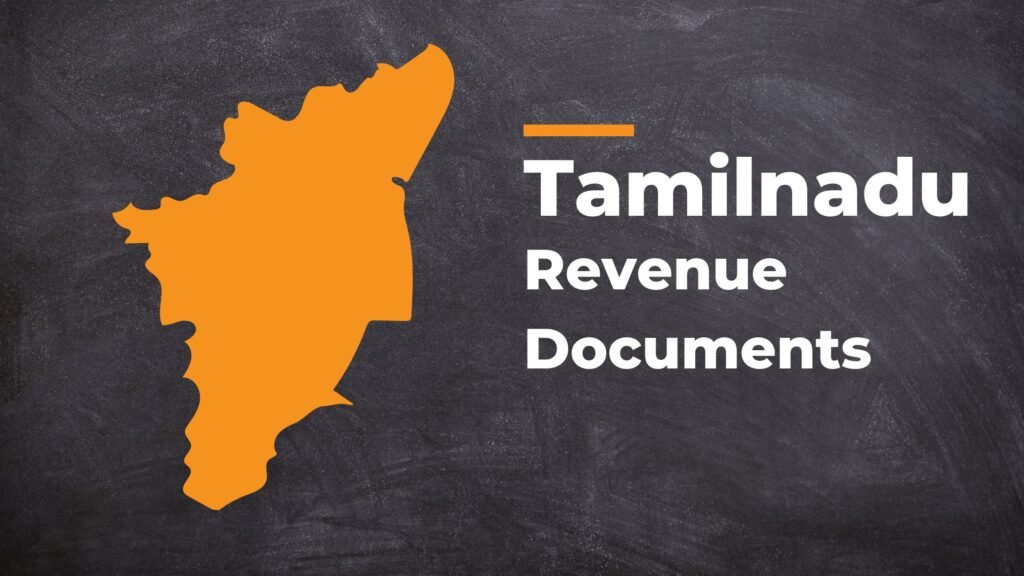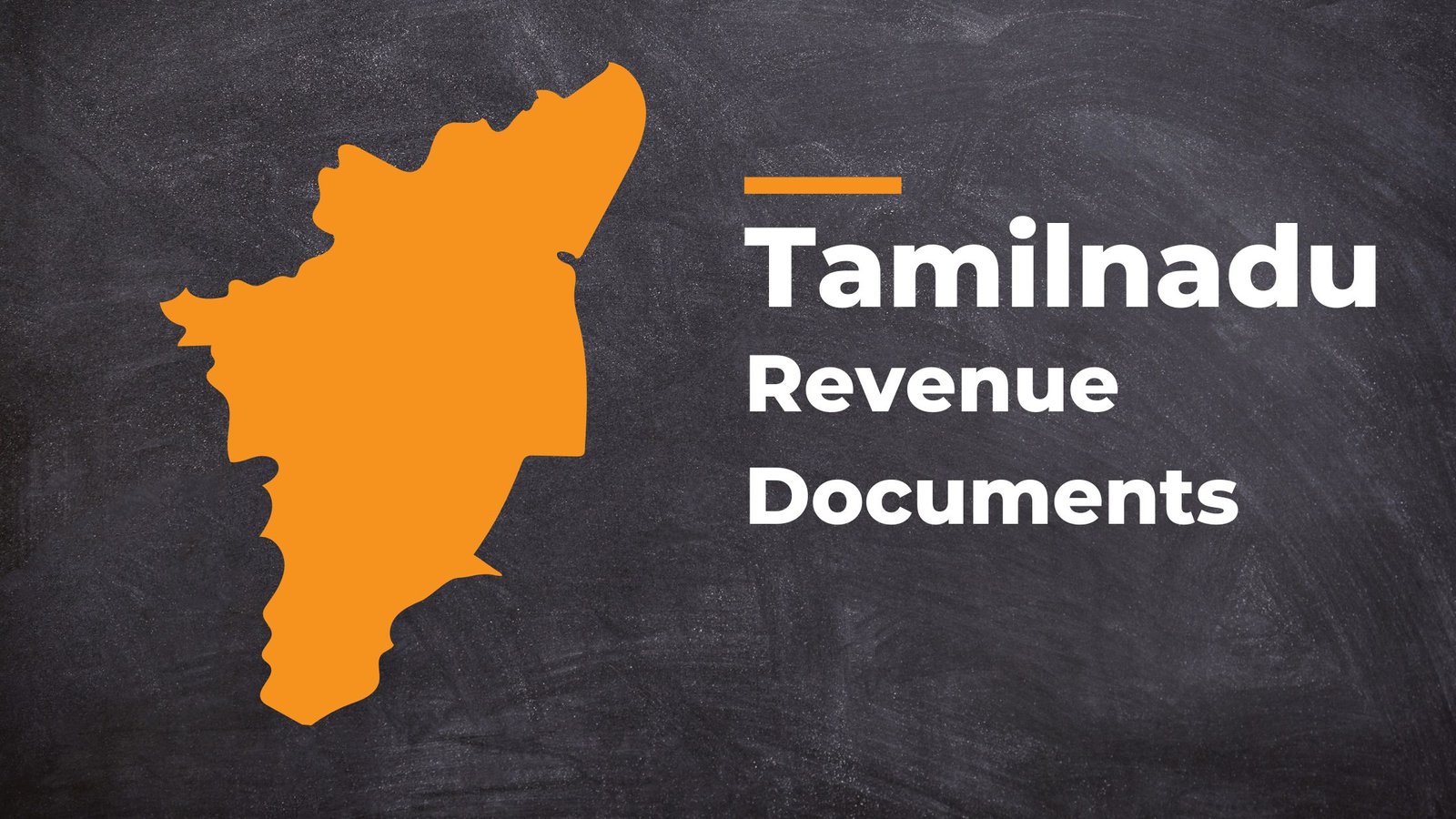Land ownership in Tamil Nadu comes with a wealth of historical and legal documentation that plays a pivotal role in establishing ownership, managing transactions, and resolving disputes. Whether you’re a landowner, buyer, or simply interested in the state’s land records system, understanding these documents is crucial. In this comprehensive guide, we’ll delve into the key land revenue documents used in Tamil Nadu and their significance in land-related matters.
Related Article – 12 important documents to be verified before buying a property
1. Patta (Record of Rights) The Foundation of Ownership
The Patta is the cornerstone of land ownership in Tamil Nadu. The Revenue Department issues it and contains critical information such as the landowner’s name, land extent, survey number, and revenue records. If you possess a Patta in your name, you have a solid claim to the land.
2. Adangal (Land Register Extract) Cultivation and Revenue Records
Adangal, also known as Village Account No. 2, is a key land revenue record maintained by the Village Administrative Officer (VAO). It documents land ownership, crop patterns, and the presence of trees on government lands and provides records of land revenue payments for the past three years. This document is essential for verifying current land utility status, establishing a clear property title during transactions, and ensuring compliance with revenue regulations. Adangal helps track unauthorized land occupation and eliminates the risk of fraud by providing accurate land details, including soil type, which is crucial for buyers of agricultural land in Tamil Nadu.
For Patta and Adangal Details: To learn more about accessing and understanding Patta and Adangal details, refer to this Tamil informative video: https://www.youtube.com/watch?v=zAvYC1aAqqo.
3. A-Register
If you’re involved in buying or selling land in Tamil Nadu, the A-Register is of utmost importance. A-Register, a comprehensive repository, records the comparative description of each field survey number, sub-division number, old survey number, land acreage, tax details, soil type and quality, and total area of the village, Punjai, Nanjai, Patta number, owner name and remarks etc., by field numbers. It also provides details of the land survey year and land settlement.
In the remarks section, the type of poramboke, which refers to government-owned land, is recorded in the case of poramboke land. This detail is crucial as it can affect the land’s potential use and value. Similarly, in the case of wetlands, the type of water source is recorded. This information is important as it can indicate the land’s suitability for certain types of development. The location of the village and all the details about the village are briefly marked on the front page. The A-Register is a vital record that gives complete information about each field and sub-division of the village.
For A-Register: To learn more about accessing and understanding A-Register, refer to this Tamil information video: https://youtu.be/qcHZE2mPJKc?si=p5ojYFIfbbPyk9p1
4. FMB (Field Measurement Book) / TSLR (Town Survey Land Record) Precise Land Measurements
The Field Measurement Book (FMB) is a comprehensive collection of maps depicting all the survey fields in the village. Each survey field has its own map showing the boundaries and subdivisions. Additionally, the maps indicate the locations of houses, wells, drains, roads, channels, etc. The FMB is essential for identifying field locations and recording cultivation. The TSLR Sketch is an accurate sketch of the urban or municipal region, including exact land measurements, boundaries, and layout designs.
The FMB is indispensable in boundary disputes as it provides precise measurements and boundary demarcations, ensuring clarity and accuracy in land records. It plays a crucial role in resolving such conflicts.
5. Village map
A Village Map is a comprehensive tool that clearly shows all the field numbers and important details of a village. It helps in identifying specific land field numbers by depicting the field boundaries, excluding the subdivision boundaries. These maps are drawn at scales of 1:5000 and 1:10000 to ensure clarity in their presentation.
6. Sale Deed, Gift Deed, and Lease Deed – Legal Documents for Transactions
These legal documents—Sale Deed, Gift Deed, and Lease Deed—are used in property transactions. They record the transfer of ownership, gifts of land, and land lease agreements. These deeds are registered with the Sub-Registrar’s office to ensure their legal validity.
- Sale Deed: This is the official proof of the sale and transfer of ownership from seller to buyer, including the purchase price and terms of the sale. It must be registered to be legally binding.
- Gift Deed: A legal document transferring property ownership as a gift without any monetary exchange. It includes details of the donor, recipient, and property.
- Lease Deed: This document outlines the terms of leasing property, including lease duration, rent, and conditions. It establishes the tenant’s rights and obligations.
Is your property legally documented?
Get your property legally verified today to avoid legal hassles in the future
visit www.propdoc.in or Contact 96007 22177
7. Power of Attorney – Legal Authorization
A Power of Attorney document authorizes a person to act on behalf of the landowner in legal and financial matters related to the land. It’s essential for situations where the landowner cannot personally manage the property.
8. Encumbrance Certificate – Transaction History
An Encumbrance Certificate is a vital document for property buyers. It shows all transactions, such as sales, mortgages, and leases, related to a specific property. It helps buyers verify the property’s history and legality.
For Encumbrance Certificate (EC): To gain insights into how to obtain and interpret an Encumbrance Certificate (EC), check out this Tamil video: https://www.youtube.com/watch?v=8AFJBNSxE44
Conclusion
Land revenue documents are essential for safeguarding property rights and ensuring smooth, legally sound transactions. Understanding the purpose and importance of each document allows property owners, buyers, and legal professionals to navigate the complexities of land ownership with confidence.
Note: Access essential land revenue documents like Patta, Chitta, TSRL Extract, Extract Sketch, and Field Measurement Book (FMB) easily by visiting the portal tn eservices, selecting the relevant section, and entering the required details to view and download these critical documents. These resources are key for verifying ownership and managing property transactions efficiently. Ensure that you have accurate information such as district, taluka, and survey number before accessing the portal to streamline the search process. For any issues or further assistance, the portal offers contact information and support options.







